Overview
An interesting pair of compressors passed through my shop this week. A Fairchild 670, owned by Studio X and a buzzaudio DBC-M, owned by Resonant Studios.
The Fairchild doesn’t need much introduction. Designed in the early 1950’s and used originally for phonograph mastering and broadcasters, it is large, heavy and has a great sound. It is referred to as a “variable mu” compressor which functions by changing the gain of a set of tubes.
The buzzaudio DBC-M is not an equivalent per se, but is a modern compressor with minimal signal path, using their proprietary Class A discrete amps in a balanced configuration. The buzzaudio is a diode compressor where a set of diodes are used in a unique way to manage volume of audio.
Both the Fairchild and the buzzaudio take the output of the compressor, convert the level into a control voltage that is then used to manage audio volume. How they manage level is different, but they are also very similar.
But the specifications!
What’s interesting about both of these devices is that if you measure classic distortion, both appear to have high THD or IMD. If you only purchased on classic specs, you’d never buy either of these devices.
Yet both are known for their great sound. It was fascinating to see the commonality between the two of them.
For each device that comes into the shop I run a set of tests on my Audio Precision APX-515. This lets me see the baseline of performance and what I really need to work on. The same set of tests are run on completion of any work. I’ll show the results of a few of these tests to compare the two systems. I’ll also give graphs from a classic Neve module as a reference point for a clean system.
Frequency response between the two of show smooth response with the Fairchild dropping 2dB at 20Hz. Not unreasonable considering the number of transformers the signal passes through. The buzzaudio is completely flat.
Fairchild:
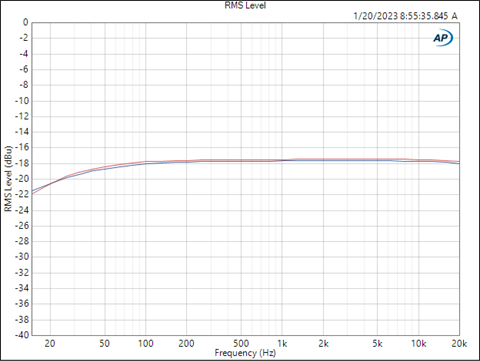
buzzaudio
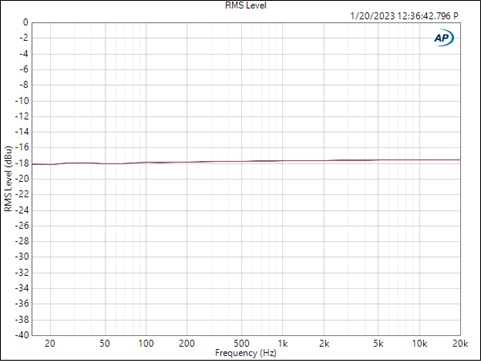
Measuring Total Harmonic Distortion, or THD at multiple frequencies across the spectrum shows significant distortion, especially in the low end.
Note the Fairchild measures .02% at 500Hz, not a bad measurement; but it rises significantly at frequencies above and below 500Hz. In the Fairchild, the audio passes through 2 large transformers and this can explain some of the distortion in the low end.
The buzzaudio measures .1% to .2% at 500Hz – 10x the Fairchild – and shows a similar rise above and below 500Hz, even though the buzzaudio doesn’t use transformers in the audio path.
All measurements below are done without compression.
Fairchild:
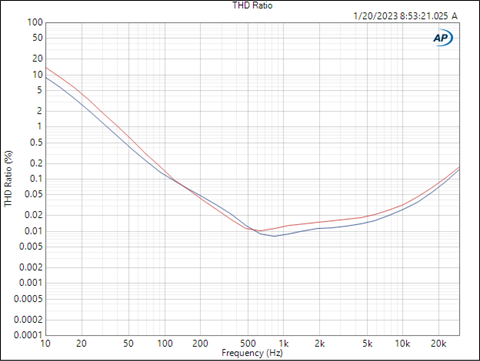
Buzzaudio:

Neve 1081:
Readings from a Neve 1081 module from mid 1970’s are included for reference. The 1081 is known as a great sounding module with no chips, only transistors inside. Below is the same sweep on a Neve 1081. Note that at 100Hz the Neve has .02%, while the Fairchild has .05% and the buzzaudio has .2%. This even though the Neve 1081 has transformers on the input and output.
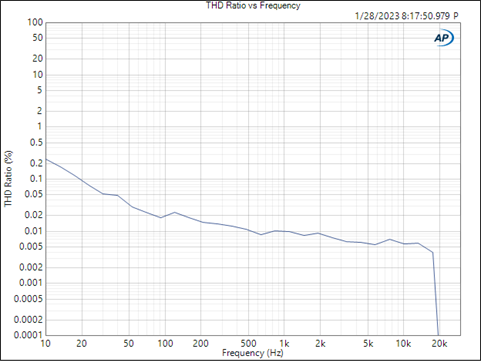
It is helpful to understand what the characteristics of the distortion are. An FFT view with a 1kHz ione at +4dBU shows significant 2nd and 3rd harmonics on both devices, with the buzzaudio’s 2nd harmonic at -60dB while the Fairchild is -80. The 4th and 5th harmonics are nearly nonexistent on the Fairchild. The buzzaudio shows some noticeable peaks on the 4th and 5th harmonics.
Fairchild:

Buzzaudio:
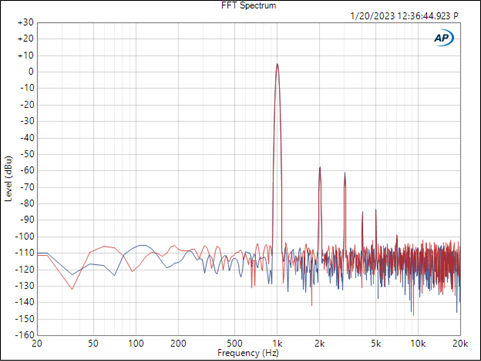
Neve 1081
There’s a very low (<110dB) 3rd harmonic and an extremely low noise floor below 125dB.
Harmonics of 1kHz:

Intermodulation Distortion, or IMD also measures high, at least according to hifi standards. IMD exists when an amplifier has trouble amplifying complex signals, in this case 2 individual sine waves. The distortion artifacts are multiples of the difference between the tones.
A twin tone 19kHz/20kHz signal is applied from the Audio Precision and an FFT graph is shown. The two largest peaks are the original signal, while multiples of 1kHz, the difference frequency, are the distortion:
Fairchild:
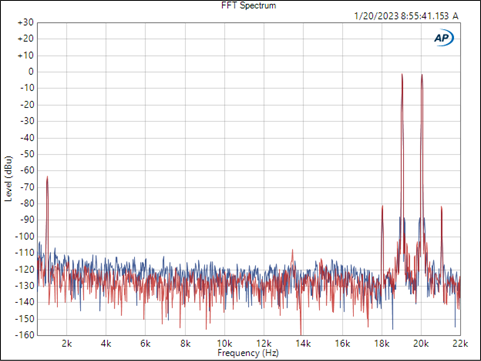
Buzzaudio:
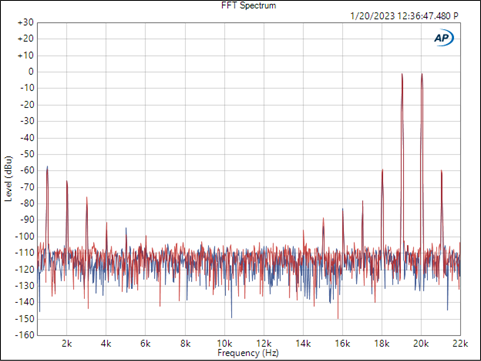
Here the Fairchild has much lower level of signal at 18 and 21kHz, just under -80dB where the buzzaudio is at -60dB for the same frequencies. You’ll also note more peaks at 2kHz-6kHz 14kHz-17kHz on the buzzaudio. This indicates significant intermodulation distortion on the buzzaudio.
Looking again at the Neve 1081 IMD chart below, you’ll note that the chart looks slightly different. I’ve extended it to 30kHz so any Intermodulation above 20kHz is shown. But there is no visible IMD on this device, as you can see. It’s just the input frequencies.
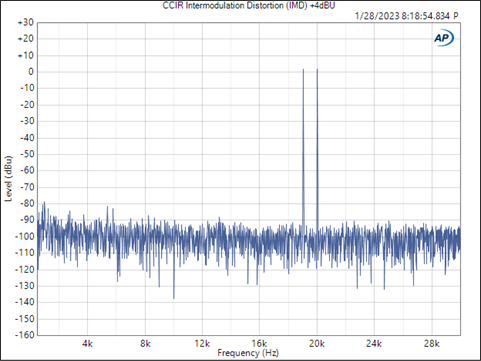
Conclusion
Some people buy audio equipment based purely on specifications. Based on what we’ve seen here, those people might miss out on some really great sounding equipment.
And to be clear, I’m not saying the Fairchild or buzzaudio are bad; quite the contrary. Owners of these devices love them for the clarity of sound as they are compressing program material.